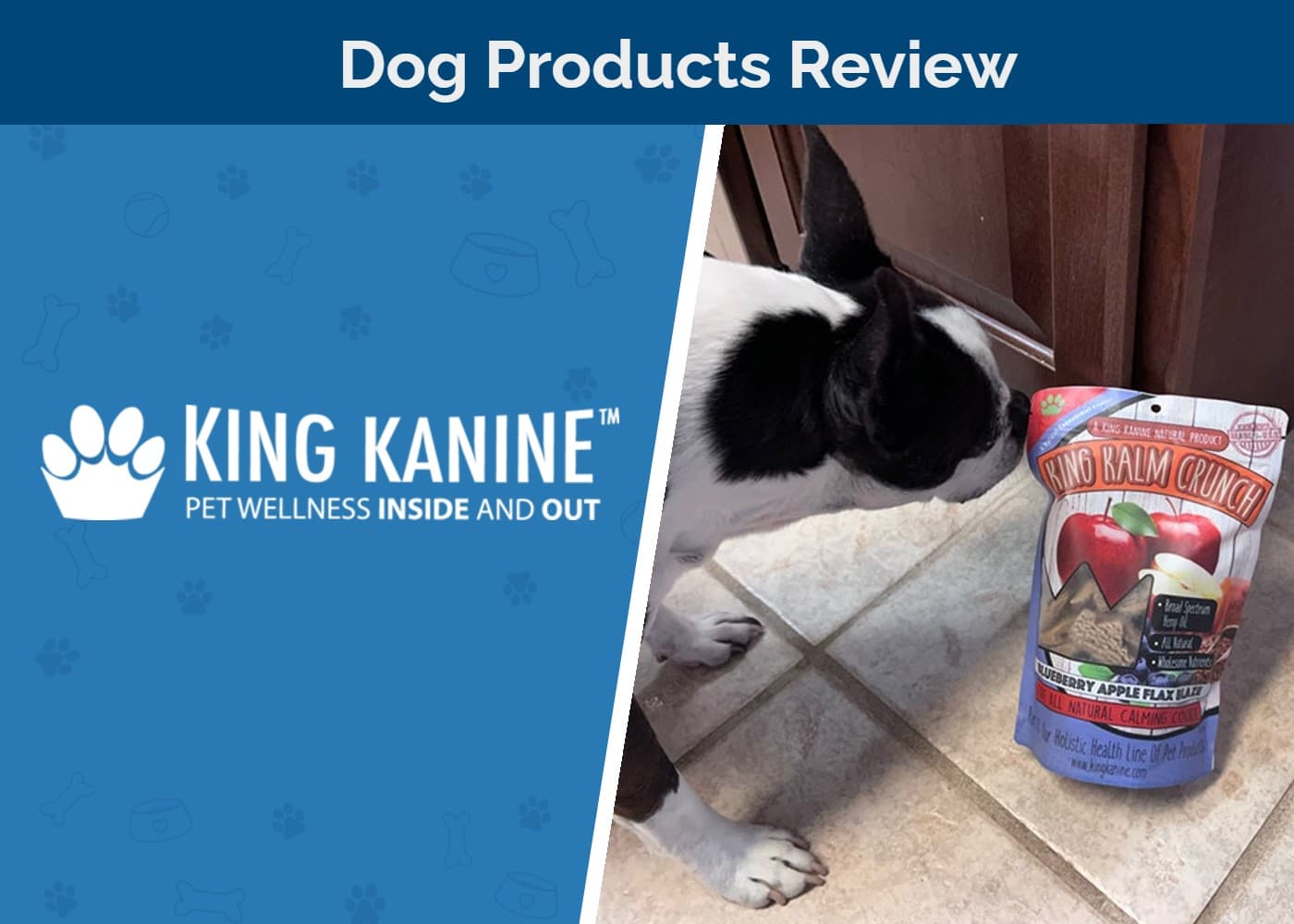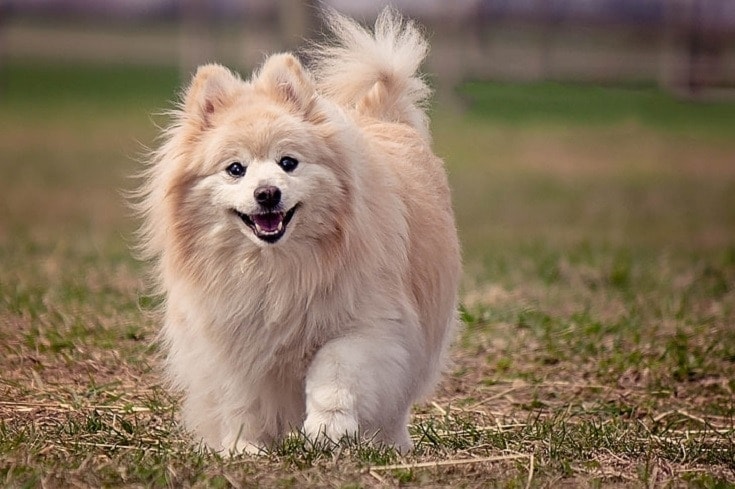How To Introduce a Hyper Dog to a Cat? 7 Expert Tips
Updated on
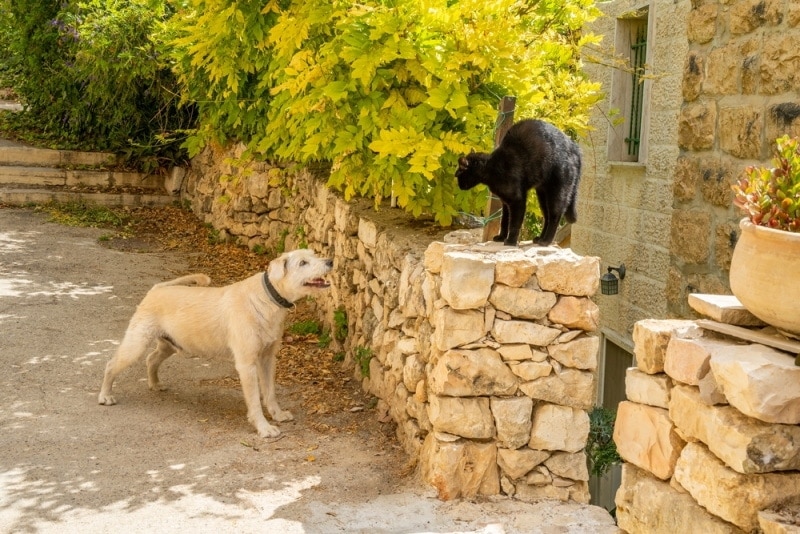
Hyperactive behavior in dogs is not uncommon, and it is mostly seen in young dogs who are still in their “puppy phase” or specific breeds that need plenty of exercise. A hyper dog can be difficult to introduce to a cat while making it an extremely stressful experience for the cat.
You may find it challenging to make a positive introduction between the two when your dog is barking, running around, whining, and trying to chase the cat. Some dogs do perfectly fine with cats, while others are so hyper and excited that they only cause the cat stress. This can make it challenging for you as the owner to get your dog accustomed to cats.
It is important to understand that most dogs see cats as prey animals, and increased hyperactivity and predatory behavior when being introduced to a cat is seen in many dog breeds that have been bred to hunt vermin, such as terriers.
Preparation
The introductory process between your hyper dog and the cat can take days to weeks before it is successful. This excitement and drive to chase and sniff the cat is a common behavior in hyper dogs, but it is not good to encourage this behavior.
Most cases of hyper dogs not getting along with cats is because they have no previous training and experience with cats. Cats are seen as a new and exciting thing that has engaged their interest. Your dog might not know how to act around a cat, thus letting their hyperactivity get the better of them.
When introducing a dog known for being hyper to cats, keep these in mind:
- Patience – It can take a while for the dog to stop displaying hyperactive behaviors around cats. Avoid rushing your dog or the introductory process.
- Positivity – Do not make the dog feel bad or reprimand the dog for becoming hyper around the cat, this can cause the dog to feel scared, and confused, and even react with aggressiveness. Avoid yelling at your dog if they do not know how to interact with a cat right from the start, it can take time.
- Safety – Both the dog and cat need to be kept safe during the introduction phase. Have a plan thought out in case the dog or cat reacts with aggression. Always be prepared to intervene when necessary.
When it comes to dealing with hyper dogs and successfully introducing them to cats, here are some tips.
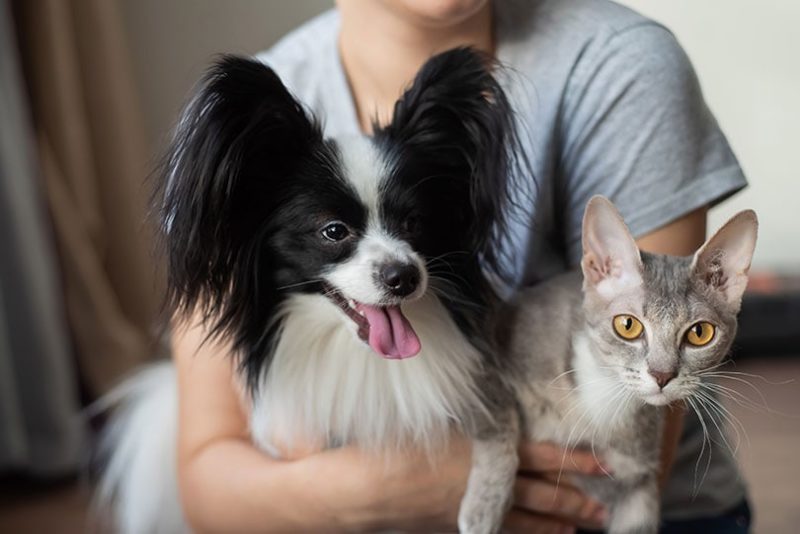
The 7 Tips To Introduce a Hyper Dog to a Cat
1. Exercise the Dog Beforehand
A tired dog is going to be calmer and release most of the pent-up energy they would spend on chasing a cat. Not only does exercise help achieve this, but it is good for your dog too. Before introducing your hyper dog to a cat, try to encourage your dog to play throughout the day so that they are tired during the introduction process.
Exercise such as a walk, run in a dog-friendly park, a game of fetch in the yard, or other fun exercises for your dog will work. The exercise aims to tire your dog out just enough for them to be more relaxed. A tired dog is less likely to exert more energy trying to chase a cat, helping to keep them calmer during crate introductions.
Note: Always ensure that your dog has access to fresh water at all times when exercising.
2. Create a Calm Environment
A busy environment with lots of bustle and distractions is going to make it difficult for a hyper dog to focus and keep still. Lots of people in a room, along with noises, new smells, and an unfamiliar environment can make hyper dogs more eager to explore, bark, and feel uneasy. This can also be stressful for the cat, who is going to want peace and quiet to feel safe.
Try to keep the environment as calm and familiar to both pets as possible. This involves keeping blankets and familiar items near the cat or dog that has their scent on. Reducing noise levels and dimming any harsh lighting can make the environment more peaceful. The hyper dog will focus less on the surrounding environment and more on the cat, which might seem bad at first, but it allows the dog to focus on the cat without feeling the need to get hyper and excited over other new things.
If the dog and cat feel calm and focus on each other without the hustle and bustle in the environment, the introductory process can go much smoother, and be less stressful.
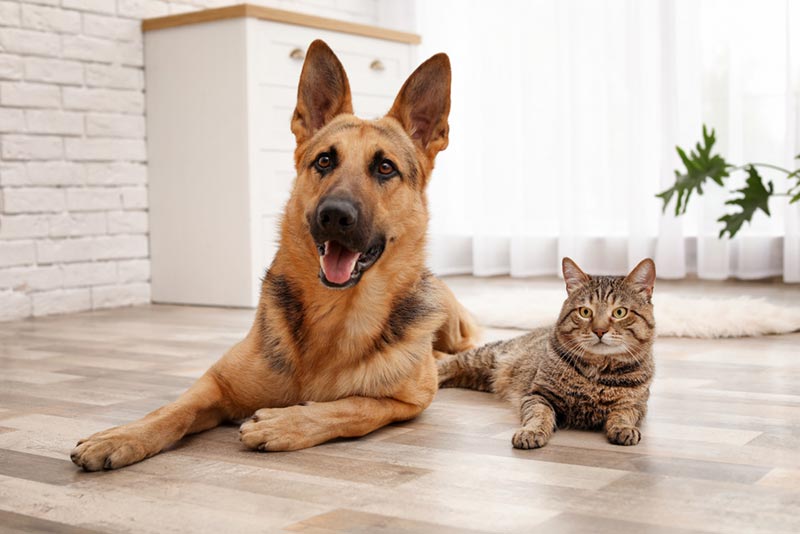
3. Try Crate Introductions
If your hyper dog tries to chase, bite, or claw at the cat out of curiosity or even aggression, keeping both pets safe is important. Your dog’s hyperactivity can injure and stress out the cat, and it might be necessary to use a crate to keep one or both animals safe.
This process involves placing either the hyper dog into a crate or both animals into a crate. The crate should be appropriately sized and contain blankets and items with a comforting scent for both animals. This method of introduction is better for dogs who have already been crate-trained, since crate-training a dog who has no experience in crates can be stressful and confusing for the dog.
The crate dog should be placed in the same room as the cat, ideally within visual distance of the cat. The crate will prevent the hyper dog from exhibiting behaviors that could injure and stress the cat. If you plan to crate both the dog and the cat, then placing the crates facing each other with a small distance in between will work.
If continuous whining and barking during crate introductions is an issue with your hyper dog, this might not be the best method for your dog.
4. Food as a Reward
There’s no doubt that dogs are highly motivated by food. Using food as a reward for good behavior can make the introductory process with the cat a more pleasant experience. When your dog knows that doing a certain behavior that is deemed “bad” doesn’t get them the food reward, but one that is “good” does, then they are more likely to replace bad behaviors for good ones in the hope of reaping the reward.
Healthier dog treats and snacks are better, especially since you might be giving them a lot of treats during this time to reward their good behavior towards the cat. Some examples of when it will be necessary to give your dog a treat is when they sit on command instead of chasing after the cat.
You can also teach your dog to look away from the cat and rather redirect their attention elsewhere, such as to a treat or their favorite toy. Ultimately trying to train your dog to pay less attention to the cat.
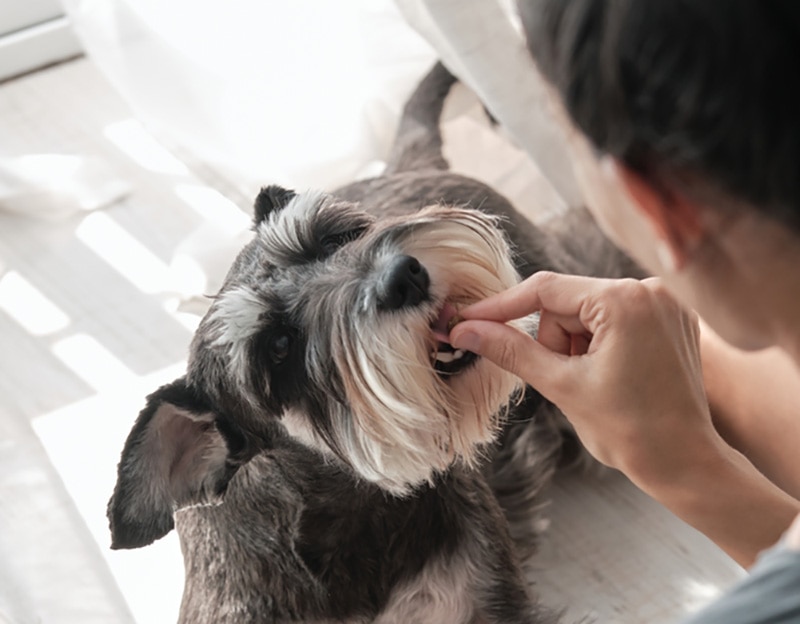
5. Gradual Desensitization
Sometimes introducing your hyper dog to a cat without gradual desensitization is going to boost your dog’s hyperactivity. This is where you gradually get your hyper dog used to the smell of a cat and desensitized to the smell before allowing them to meet face-to-face with a cat. This is an especially great method to use for hyper dogs since it gets them familiar with the smell.
It is aiming to prevent them from being overwhelmed and energized by the presence of new smells from a cat. Repeated exposure to the cat smells can help lessen your dog’s reaction when they finally do meet the cat.
- Allow the cat to stay in a cat-proofed room for a few hours, with a comfy sleeping spot, water, a litterbox, and toys. The dog should not have access to the room, and it should be a room that the dog does not need to use. This method will allow the smell of the cat to transfer around the room.
- After a few hours or a night, place the cat into another room or secure the crate away from the dog. Let the hyper dog smell the room or area where the cat has been.
- Your dog will become excited and curiously sniff each area where the cat has been. The dog may seem fixated on the room and eager to sniff the whole room.
- Once your dog has sniffed around for a few minutes to half an hour, remove the dog from the room and place the cat inside again. Do not let the dog into this room, and ensure the door is closed at all times.
- Repeat this process a few times a day and keep the cat in the room until your dog becomes less interested in the smells.
This method works best in cases where the hyper dog cannot be trusted around the new cat who needs a safe room to stay in before being properly introduced to the dog. After your dog has sniffed the cat’s room several times, you can place old blankets that the cat slept on around areas of the house your dog uses.
6. Teach Skills and Command Training First
An obedient dog is easier to train than one that isn’t. If the hyper dog has learned basic skills and command training, it can greatly help when introducing the dog to a cat. Teaching your dog the basic commands and skills they need for obedience is encouraged before introducing hyper dogs to cats.
This training comes in handy if you need to command your dog to sit or stay in the presence of a cat, and it can make the introductory process much simpler for you. Training a puppy or young dog is much easier than an older dog, and in some cases, you might need to get a professional dog behaviorist to help you.
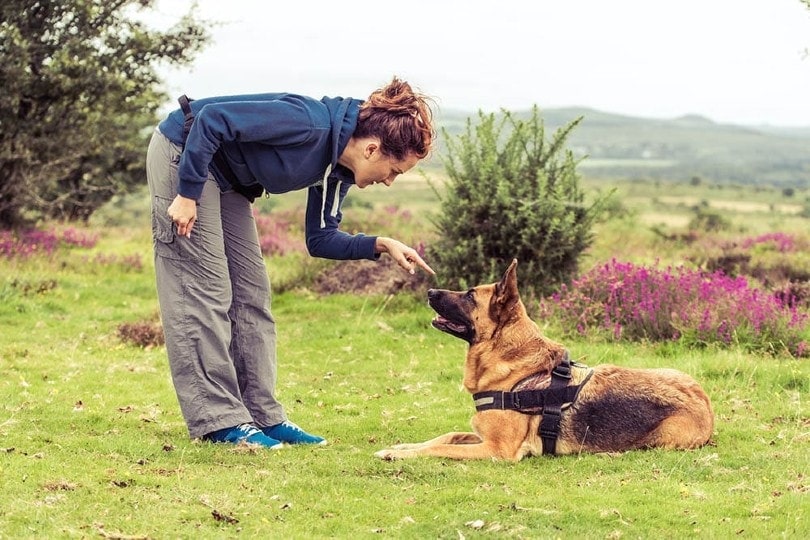
7. Use a Leash
If your dog is likely to react to a dog by chasing them, placing them on a lead with a comfortable harness can make it safer and less stressful for the cat. This method can be used if your dog is already comfortable with a lead and harness, and it allows you to control your dog better.
Allow the dog to sniff and interact with the cat from afar while being on the leash. If you notice your dog getting too excited or even aggressive towards the cat, lead your dog away to give both the dog and cat some distance. Once the dog has calmed down again, you can lead them back into the same area as the cat to try again.
This method works best when using it in combination with gradual desensitization and rewarding for good behavior.
Conclusion
With careful planning and patience, you can successfully introduce hyper dogs to cats or kittens, and even train them to live together. Most hyper dogs can take a while before they start to lose their hyperactivity around cats. The smell of a new animal in the environment is bound to cause your dog some excitement and increased activity levels, making gradual introductions between the two necessary.
- Related Read: How To Introduce a Puppy to Cats?
Featured Image Credit: Moshe EINHORN, Shutterstock


